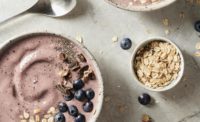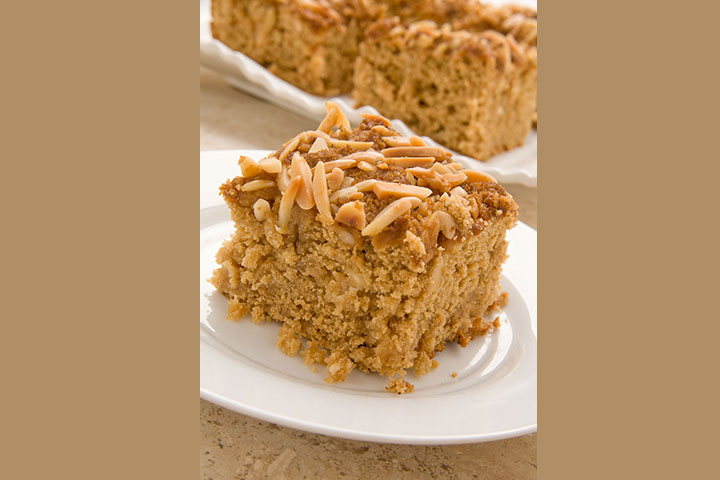Immunity, Gut Health Trends Drive Formulations with Dietary Fibers and Gums
The plant-based trend has also brought a wealth of new and advanced fibers and gums to the forefront

From well-established ingredients like pectin to newer choices like pumpkin fiber, ingredient makers are building veritable libraries of functional fibers.
PHOTO COURTESY OF: TreeTop, Inc.

Expert blends of fibers and gums allow developers to get the most out of the functional and textural benefits of each.
PHOTO COURTESY OF: Nexira SAS

Gums and fibers from nuts and citrus have proven ideal for beverages such as dairy milk analogs and RTD juice smoothies.
PHOTO COURTESY OF: CP Kelco US, Inc.

Consumers have demonstrated easy acceptance of ingredients derived from ancient seeds and grains such as chia.
PHOTO COURTESY OF: Functional Products Trading SA/Benexia




Fibers and gums have always been healthful superheroes. And like the superheroes of fiction, they also live dual lives. The prebiotic powerhouses have been enjoying a high profile lately, based on their connection to gut health and, in turn, their contribution to building and maintaining a strong immune system.
Overall, decades of research have connected increased fiber consumption to a wealth of health benefits. The range is as comprehensive as heart health, reduced cancer risk, better blood sugar management, lower cholesterol, mental well-being, cognitive health, and even better dental health and reduced risk of dementia.
The “mild-mannered” side of fiber’s superheroes is also trending high as consumers are focusing more closely on textures in the foods and beverages they enjoy. And fibers and gums are integral to stabilization and mouthfeel across multiple product categories.
The plant-based movement placed fibers and gums for texture squarely in the product developers’ spotlight. With meat and dairy mimics jumping into the center of the healthy food spotlight, gums and fibers became the equivalent of Tony Stark admitting at a press conference that he was Iron Man: No secret identity needed anymore.
Plant Your Gums Here
The plant-based trend brought a wealth of new and advanced fibers and gums to the forefront. Due to their textural roles in creating credible meat and dairy analogs, those fibers sourced from legumes (ranging from the ubiquitous soy and guar to lentils, chickpeas, and mung beans) and grains (from the common sources of wheat, oats, corn, barley, and rice to hemp, chia, and quinoa) have been the more prominent ones.
The door also opened wider for less well-recognized gum and fiber sources, such as those from roots and vegetables (potatoes, sweet potatoes, broccoli, and carrots). Even the common tropical root tapioca is experiencing a generous jump in popularity as a native, clean-label source of dually functional fiber.
The major consumer trend toward simple, natural ingredients is positively impacting fruit-derived gums and fibers as well. Fruit pectin currently is undergoing a strong renaissance, being so closely associated with its most common source, apples.
Another pome fruit, pears, are emerging as an available source of fruit fiber in food formulations, as are those giant berries known as pumpkins. And locust bean gum is gaining new interest under its more attractive moniker of carob gum. Tropical fruit fibers are having their moment as well, with baobab, bananas, jackfruit, mango seed, and plantain fibers becoming increasingly available.
The Prebiotic Halo
Fiber has long been favored for increasing transit time in the g.i. tract to reduce the level of toxins and bind to cholesterol and other less-desired or undesired components and clear them from the body. Foremost in mind for today’s consumers when fiber benefits are mentioned are those complex carbohydrate components that feed the hundreds of beneficial species of microbes that provide a panoply of health benefits throughout the entire body.
It is now known that most of the favored food fibers have this prebiotic capacity. The most recent arrival in that toolbox, acacia gum—approved as a prebiotic by the FDA only late last year—is unusual in that it derives from tree resin rather than fruits, roots, or bark.
Also inspiring is the fact that pure acacia fiber, while stimulating the diversity of the microbes in the g.i. tract, is not as rapidly fermented as the medium-chain fructo-oliggosaccharide prebiotics and thus does not trigger undesirable abdominal effects. This means it is perfectly suited for products conforming to the popular FODMAP diets. Yet it still provides help in boosting satiety and maintaining good blood glucose levels.
Acacia is joined by two other unusual gum and fiber sources, carrageenan (from seaweed) and mushroom fiber. Carrageenan has displayed prebiotic tendencies such as stimulating the release of short-chain fatty acids. Mushrooms, like oats, are rich in beta-glucans, soluble polysaccharides with strong cardiovascular and immunity-promoting health benefits.
The dual nature of better formulations and better health derived from gums and fibers extends to sugar reduction. Some fibers, such as medium-chain oligosaccharides, can contribute to viscosity, bulking, binding, and mouthfeel in the way sucrose does. The more sweet ones of these, such as isomalto-oligosaccharide, which is about half as sweet as sucrose but with only about 60% of sucrose’s calories, provides flavor and masking capacities similar to those of sugar. It also has humectant and flavor carrying properties.
— David Feder, RDN, Executive Editor–Technical has been a food, nutrition, and ingredient journalist for more than 30 years, including more than 10 years for Prepared Foods. A former professional chef, he became a registered dietitian while completing research and coursework toward a PhD in nutrition biochemistry at the University of Texas at Austin. You may contact him directly with any questions, praise, or complaints at federd@bnpmedia.com.
Sustainably Filling
High-fiber flour sources, such as those from peas and ancient grains and seeds, not only boost the nutritional profile of the products they go into but have an added advantage. They typically derive from reduced carbon-footprint farming, requiring less energy and water to grow, harvest, and process. Also on the sustainability front are fibers sourced from spent grain (such as brewers’ barley) and upcycled crop leavings.
One such ingredient making headway in the food industry is arabinoxylan. Arabinoxylan is a type of cellulose ubiquitous in nature, making up the cell walls of plants. It is predominantly made up of two five-carbon sugars (pentose), arabinose and xylose. Arabinoxylan was discovered to be a strong prebiotic, stimulating the release of short-chain fatty acids in the gut and, in addition, it contains powerful phytochemicals such as phenolic acids that are known to provide protection from fungal pathogens.
Remember to Resist
High-amylose maize and other sources of resistant starch have been bubbling beneath the surface of consumer awareness for more than a decade. These functional fiber superheroes are due for a brighter spotlight. Resistant starch is unique in that it works in formulations as a starch or flour, creating soft and delicate baked goods without impact on flavor or texture, but once in the body, it functions as a fiber, stimulating the production of short-chain fatty acids, boosting satiety, helping to manage weight, and reducing the risk of multiple disease states. Well-tolerated and free of fiber’s digestive “after effects,” in amounts of up to 25% replacement for wheat flour in formulation, it actually adds a slight amount of volume to risen baked goods.
Beyond Digestion
Whether an unintended consequence of the recent pandemic or coincidence, deaths from diabetes have increased at a double-digit rate since 2019. Last year, total diabetes-related deaths topped 100,000 in this country, according to the WHO. Beneficial fibers have healthful functions beyond keeping the gut healthy and its microbes happy. Gums and fibers such as inulin, digestion-resistant maltodextrin, isomalto-oligosaccharide, and resistant starch boost satiety and, in some cases, add sweetness that makes them ideal for foods and beverages targeting diabetes and insulin resistance.
Food For Thought
Prebiotic fibers and gums, such as those from fruits, nuts, and other plant sources, have been shown to significantly reduce the amount of the stress hormone cortisol. Multiple studies have demonstrated a bidirectional communication between our brain and the gut microbiota, the so-called “gut-brain connection.” Positive neurophysiological characteristics, such as resistance to anxiety and depression, have been linked to the proper sustenance of beneficial bacteria by prebiotics within the g.i. tract.
Looking for a reprint of this article?
From high-res PDFs to custom plaques, order your copy today!










